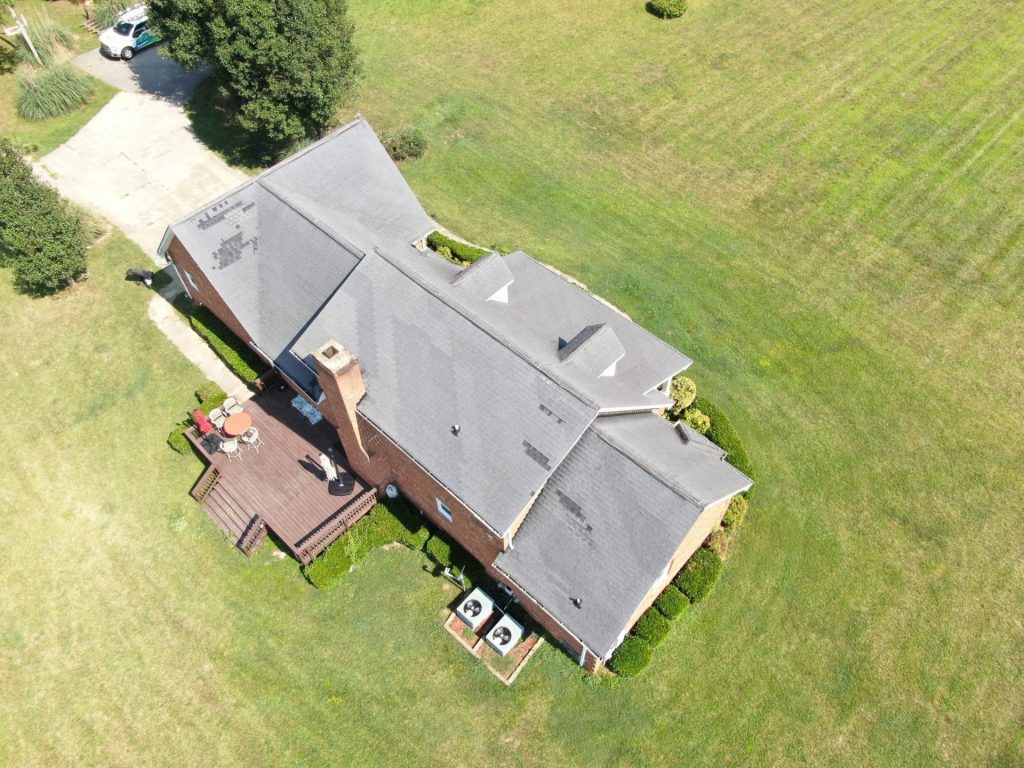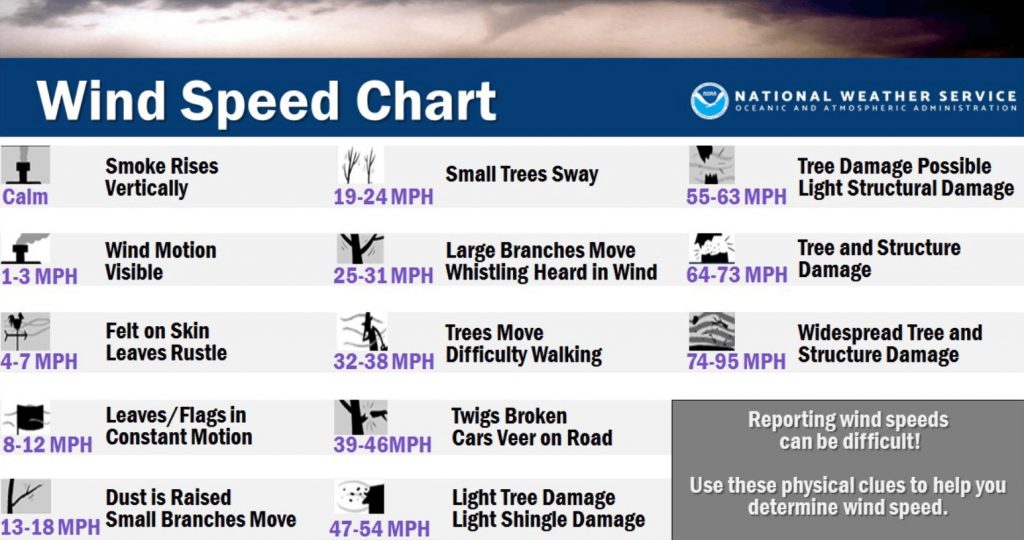This blog was originally posted on August 16, 2021 – Updated on May 23, 2024
Living in Charlotte, NC, exposes you to the risks associated with wind damage on your roof. Wind damage often impacts the asphalt shingles of your roofing system, a common occurrence due to wind-borne debris or the sheer force of the wind itself. The aftermath of such damage is usually evident in torn, creased, and missing shingles on your roof. As a reputable roofing contractor serving the Charlotte, NC, area, we understand the impact of severe weather events like thunderstorms with high winds, hail storms, and hurricanes. With our experience, we’ve compiled a comprehensive list of the six most common signs indicating wind damage to a roof. Additionally, we offer professional roof repair and replacement services tailored to address any issues arising from wind damage, ensuring the longevity and resilience of your roofing system against future weather challenges.
What Speed Causes Wind Damage To Roofs?
Understanding the wind speeds that can lead to roof damage is crucial for homeowners to assess potential risks and take appropriate precautions. While the threshold for wind damage can vary depending on factors such as the quality of roofing materials and the roof’s design and construction, there are general guidelines to consider.
In most cases, sustained wind speeds of around 45-50 miles per hour (mph) can start causing damage to roofs, particularly if the roof is older or already compromised. As wind speeds increase beyond this threshold, the risk of damage escalates significantly. Wind gusts, which are sudden bursts of high wind speed, can also pose a threat to roofs, especially if they exceed 60 mph.
However, it’s essential to note that wind damage isn’t solely determined by wind speed. The direction of the wind, the duration of the wind event, and the presence of debris or objects that can become airborne projectiles all play a role in the severity of roof damage.
6 Most Common Signs Of Wind Damage On Roofs
Strong winds have the potential to cause significant damage to roofs, posing a threat to the integrity of your home. Recognizing the signs of wind damage is essential for safeguarding your roof and ensuring the protection of your property.
Impact Damaged Shingles
High winds can carry debris that directly impacts the roof or that abrades shingle as it moves across the roof. During an inspection, it’s crucial to be vigilant for impact-damaged shingles, indicating where the wind driven materials have created potential sources of water damage. Addressing impact-damaged shingles promptly is vital to prevent water intrusion and avoid rapid deterioration of the roof.
Missing Shingles
One of the most apparent indicators of wind damage is finding missing shingles scattered around your yard. If you come across displaced shingles, it’s imperative to enlist the expertise of a local roofing professional to assess the extent of storm damage. Missing shingles compromise the roof’s ability to repel water, leaving it susceptible to leaks and further structural issues.
Creased Shingles
Even if the wind isn’t forceful enough to remove shingles entirely, it can still cause creases to form on the surface. Uplift pressure from the wind may cause asphalt shingles to fold upwards, resulting in the development of creases. These folds and creases, although not immediately visible, can compromise the integrity of the roof over time. Identifying creased shingles typically involves looking for darker lines across the horizontal length of the shingles.
Damaged Soffit And Fascia
Soffit and fascia play a crucial role in protecting your home by directing water away from the siding and roof perimeter. Wind damage can lead to cracks, loosening, or bending of the soffit and fascia, or even complete detachment. Damaged soffit and fascia create openings that may allow pests to enter and can serve as potential sources of leaks.
Shingles Granule Loss
High winds can contribute to the loss of the granules embedded in asphalt roof shingles. These granules provide the texture and protection to the shingle surface. You can identify granule damage by inspecting your gutters and downspouts, where the granules tend to accumulate. Granule loss compromises the shingle’s durability and can accelerate roof deterioration.
Interior Signs Of Wind Damage
In addition to exterior indicators, it’s essential to inspect the interior of your home for signs of wind damage. Check for water stains, peeling paint, or damp wood in the attic, as these may signify roof leaks. Addressing interior signs of wind damage promptly is crucial to prevent further water intrusion and mitigate potential structural damage.
What To Do If You Suspect Wind Damage?
If you suspect that your roof has sustained wind damage, it’s essential to take action promptly to prevent further issues. Here’s what you can do:
- Inspect Your Roof: Conduct a thorough inspection of your roof to assess the extent of the damage. Look for any signs of missing or damaged shingles, lifted flashing, or roof leaks.
- Document the Damage: Take photographs of any visible damage to your roof. These photos can be helpful when filing an insurance claim or communicating with a roofing contractor.
- Contact Your Insurance Provider: If your roof has sustained significant damage, contact your homeowner’s insurance provider to report the incident. They can guide you through the claims process and help cover the cost of repairs or replacement.
- Hire a Professional Roofer: For proper assessment and repair of a wind damaged roof, it’s best to hire a licensed and experienced roofing contractor. They have the expertise and equipment to safely inspect your roof and make any necessary repairs.
- Schedule Regular Inspections: To prepare for future wind events, schedule regular inspections of your roof, especially after severe weather events. A professional roofer can identify and address any issues before they escalate into more significant problems.
Does An Insurance Claim Cover Roof Wind Damage?
Most homeowner insurance policies will include coverage for roof wind damage. This coverage can also include hail damage or any other “Acts of God,” which refers to any event outside human control that cannot be predicted or prevented.
Call your homeowner insurance provider to determine your deductible for specific events. Ask for the details about your policy to understand better what types of wind damage to the roof they will cover. If you would like to ask a local roofing contractor any questions associated with your policy, please reach out to Signature Exteriors Inc. Our company is familiar with North and South Carolina insurance companies.
Wind Damage On a Roof? Signature Exterior Can Help
If you saw these signs of a wind damaged roof at your property, reach out to your local roofing contractor and schedule a roof inspection to know whether roof repair service is appropriate for your situation or if a roof replacement is needed to address the concerns.
If you live in the greater Charlotte, NC area, give Signature Exteriors a call today for a free roof evaluation. We will also happily assist you with filing an insurance claim it it’s needed. We pride ourselves in our work and would be honored to be your preferred roofing contractor in the Charlotte, NC, market. Contact us today and one of our team members will be happy to assist you.


